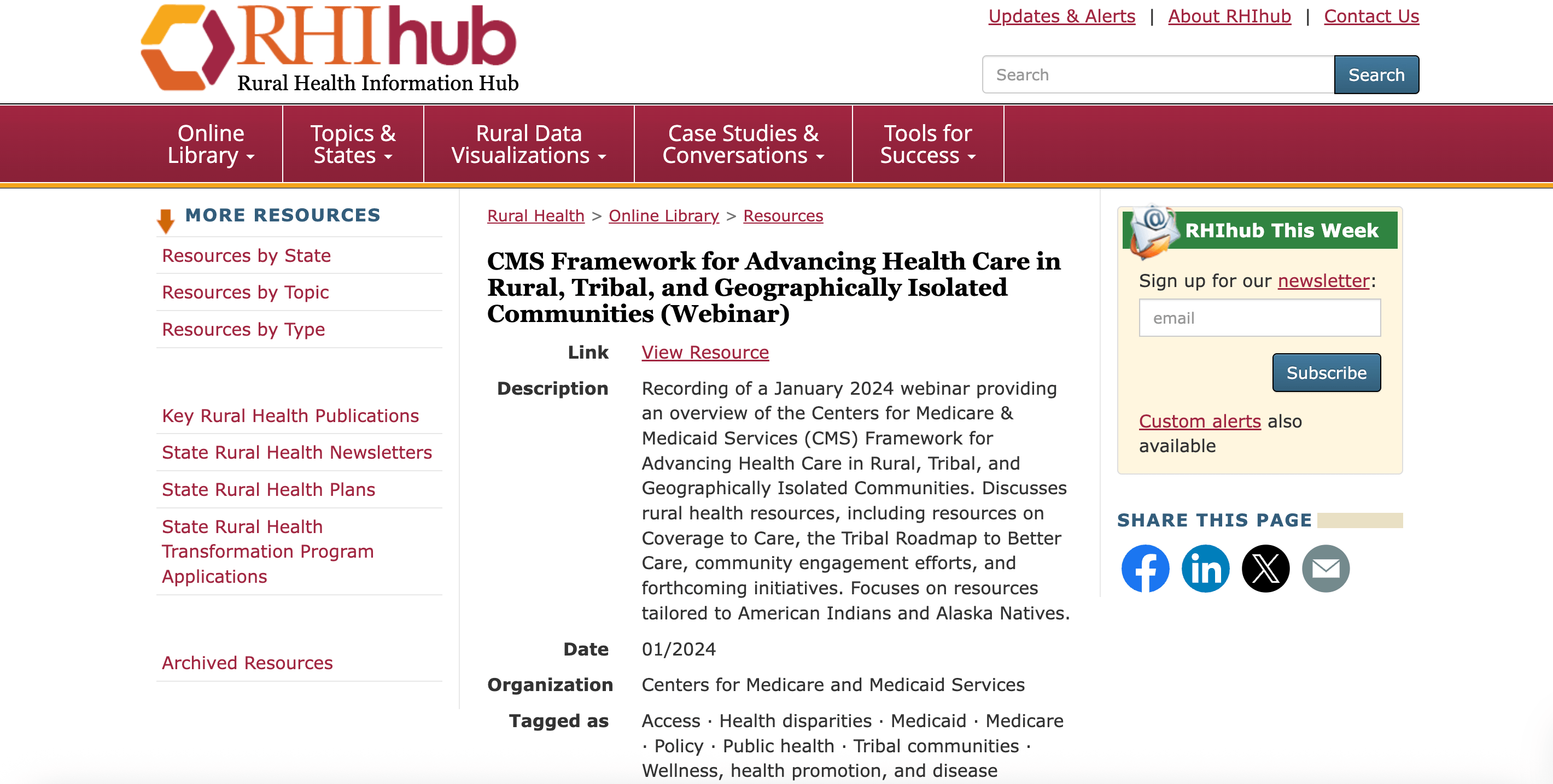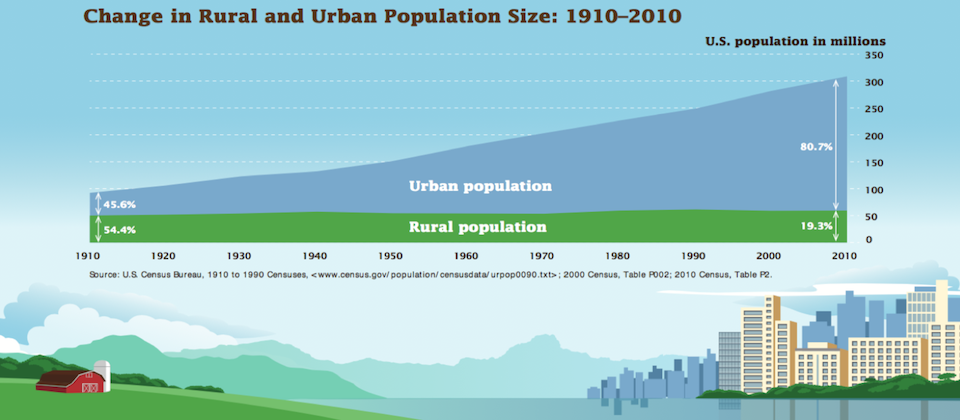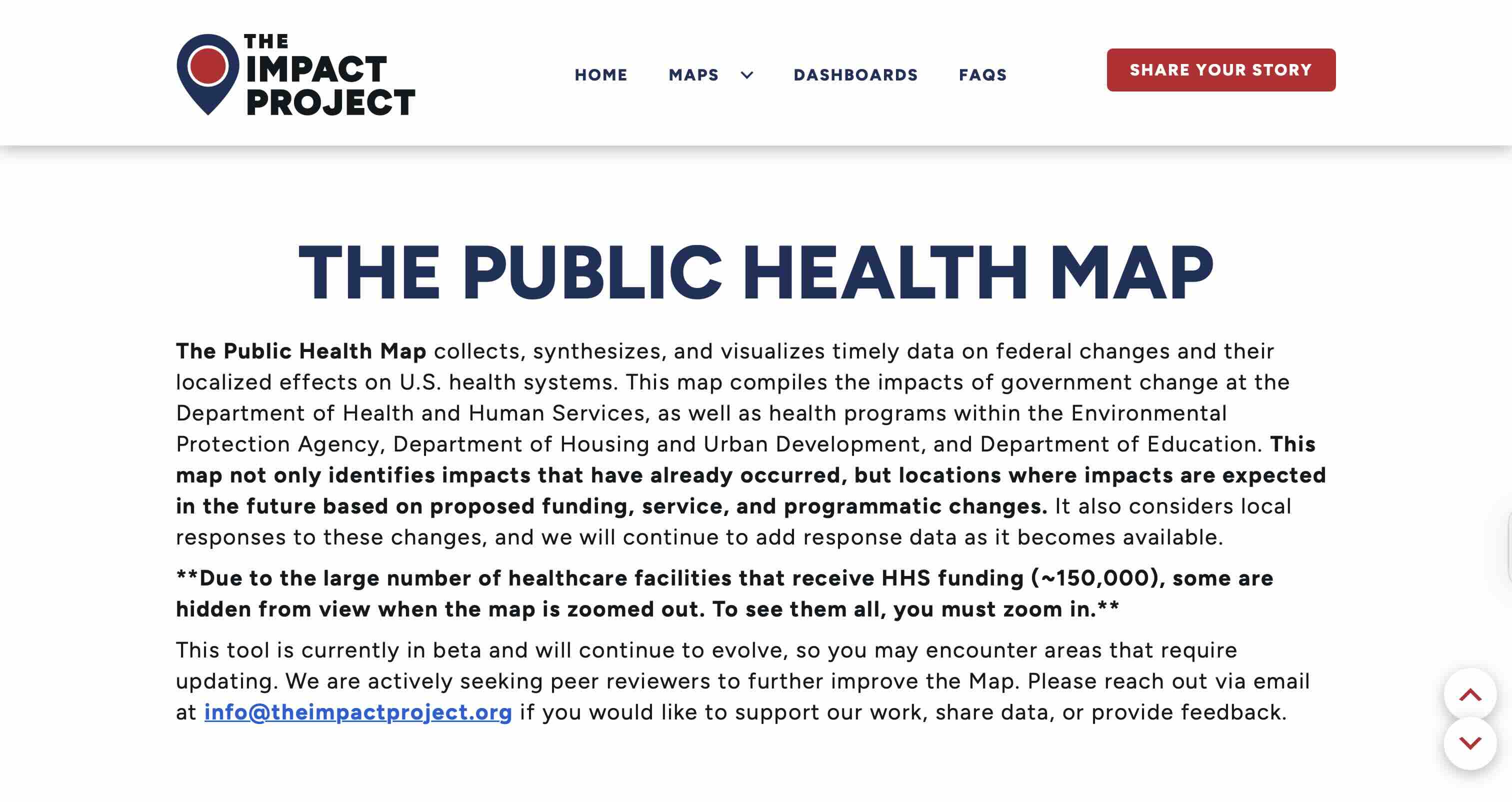Rural Communities
More than 46 million Americans, or 15% of the U.S. population, live in rural areas, and rural Americans face health disparities compared with their urban counterparts. Rural communities experience significant health disparities characterized by geographic isolation, poverty, more risky behaviors, and limited access to specialty care, in turn leading to lower life expectancy. For example, residents in rural areas are less likely to have employer-provided health insurance, and more likely to live in a federally-designated Health Professional Shortage Area for mental and primary care providers.
People living in rural communities are at higher risk of dying from preventable illnesses like diabetes, respiratory diseases, and heart attack. The COVID‐19 public health crisis exacerbated disparities for rural communities and underscored the need for diverse community-centered approaches in health research and dedicated funding to rural service agencies and populations. In general, residents of rural areas in the United States tend to be older and sicker than their urban counterparts. Racial and ethnic minorities and communities with low-socioeconomic status are most susceptible to poor health outcomes in rural America.
Higher rates of poverty, limited access to healthcare, higher rates of cigarette smoking, obesity, fatal car crashes, drug overdoses, suicide, and higher blood pressure all contribute to worse health outcomes in rural America. Social isolation, economic challenges, and higher rates of risky behaviors in rural America add to the vulnerability of residents, predominantly children and seniors of color. There are significant challenges to the provision of adequate quality care in rural America, including aging health infrastructure, less influence on policy changes, and physical isolation from commercial and government services. These challenges highlight the need for additional attention and resources aimed at improving health in rural America.
Improving health outcomes in rural America will benefit the local, state, and national health and healthcare access. Working to improve access to high-quality and affordable health care is significant to rural America’s social, physical, and mental health. For instance, high-quality care in inpatient and outpatient settings will assist in protecting and improving health and reduce the likelihood of rural communities’ receiving inappropriate or inadequate treatment. Specifically, rural communities can benefit from promoting the need for physical activity and healthy eating to reduce obesity and diabetes, and encouraging safe driving and smoking cessation, the most prevalent factor for chronic lower respiratory disease.
Resources & Tools
Kansas Corporate Farming Law
Resource - Assessment
Brought to you by Health Impact Project
Published on 02/28/2015
Systems Thinking at the Georgia Health Policy Center
Resource - Fact Sheet
Brought to you by Georgia Health Policy Center
Rural Community Toolbox: Funding and Tools to Build Healthy Drug-Free Rural Communities
Resource - Website/webpage
Proposed Coal Mine at Wishbone Hill
Resource - Assessment
Brought to you by Health Impact Project
Published on 02/29/2012
Connecting Rural Communities: U.S. 30 and Rainier Veterans Way Crossing
Resource - Assessment
Brought to you by Health Impact Project
Published on 07/31/2015
Reimagining Rural Health Equity: Understanding Disparities and Orienting Policy, Practice, and Research in Rural America
Resource - Journal Article
Brought to you by Health Affairs
In Common Newsletter: Black Voices Special Edition 2024
Resource
Brought to you by Community Commons
Published on 02/23/2024
Rural LGBTQ+ Americans Face Health Disparities, but Communities Revealed Strengths
Resource - Blog
Brought to you by Health Affairs
Rural Community Action Guide Promising Practices Supplement
Resource - Guide/handbook
Brought to you by USDA
Talking about Health Equity in Rural Contexts
Resource - Guide/handbook
Brought to you by FrameWorks Institute
Firm and Regional Economic Outcomes Associated with a New, Broad Measure of Business Innovation
Resource - Journal Article
Brought to you by Taylor & Francis
Places of Possibility: Public Art and Placemaking Toolkit for Rural Communities
Resource
Brought to you by Jackson Hole Public Art
The Complex Intersection of Race and Rurality: The Detrimental Effects of Race-Neutral Rural Health Policies
Resource - Journal Article
CMS Framework for Advancing Health Care in Rural, Tribal, and Geographically Isolated Communities
Resource - Webinar
Brought to you by RHI Hub
Country Roads: Highlighting Champions of Rural West Virgina
Resource
Brought to you by West Virginia Rural Health Association
Active Transportation in Sierra Vista
Resource - Assessment
Brought to you by Health Impact Project
Published on 08/13/2016
A Playbook for New Rural Healthcare Partnership Models of Investment
Resource - Guide/handbook
Brought to you by Build Healthy Places Network
Rural Resilience: How a Small Rural Health System Responded to the COVID-19 Pandemic
Resource
Brought to you by West Virginia Rural Health Association
Rural America Lost Population Over the Past Decade for the First Time in History
Resource - Policy Brief
Wild, Wonderful & Healthy West Virginia Policy Scan
Resource - Guide/handbook
Brought to you by Build Healthy Places Network
2002 Federal Farm Bill
Resource - Assessment
Brought to you by Health Impact Project
Published on 11/30/2004
Teen Pregnancy in New Mexico
Story
-
 Original
Original
Brought to you by Community Commons
Published on 03/01/2017
2023 Farm Bill: Advancing Public Health at the Intersection of Food, Environment, and Economic Policy
Story
-
 Original
Original
Brought to you by Community Commons
How Struggling Dayton, Ohio, Reveals the Chasm Among American Cities
Story - Written
Brought to you by ProPublica
Mapping Access to Higher Education in Rural Areas
Story
-
 Original
Original
Brought to you by Community Commons
Published on 12/15/2016
A Rural Community Decided To Treat Its Opioid Problem Like A Natural Disaster
Story - Written
Brought to you by NPR
Life Off the Highway: A Snapshot of Rural America
Story - Written
Brought to you by Community Commons
Disability in Rural America
Story
-
 Original
Original
Brought to you by Community Commons
Published on 02/07/2017
Indicators of Rurality: How Should we Define “Rural” and “Urban” Communities?
Story - Written
Brought to you by IP3
Centering Young Black Leaders in the Face of a Looming Climate Crisis
Story
-
 Original
Original
Brought to you by Community Commons
Published on 02/22/2024
Promoting Health Equity in Rural Communities
Story - Written
Brought to you by ChangeLab Solutions
Published on 12/13/2022
Homes on the Range: Homeownership Rates Are Higher in Rural America
Story - Written
Brought to you by Community Commons
Data & Metrics
Related Topics


















































































